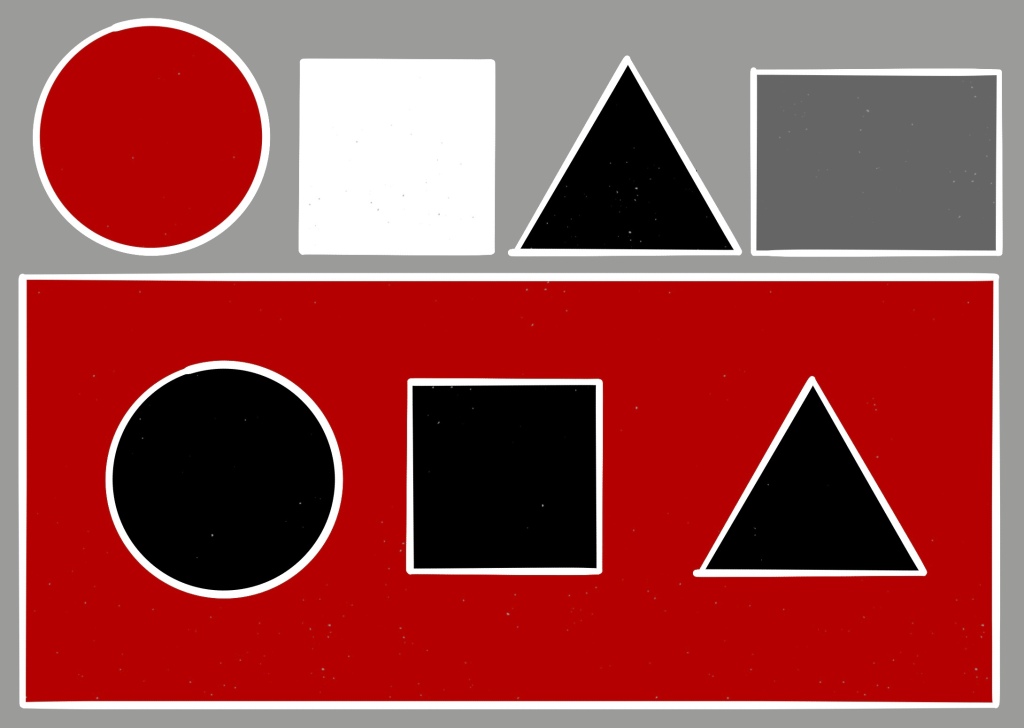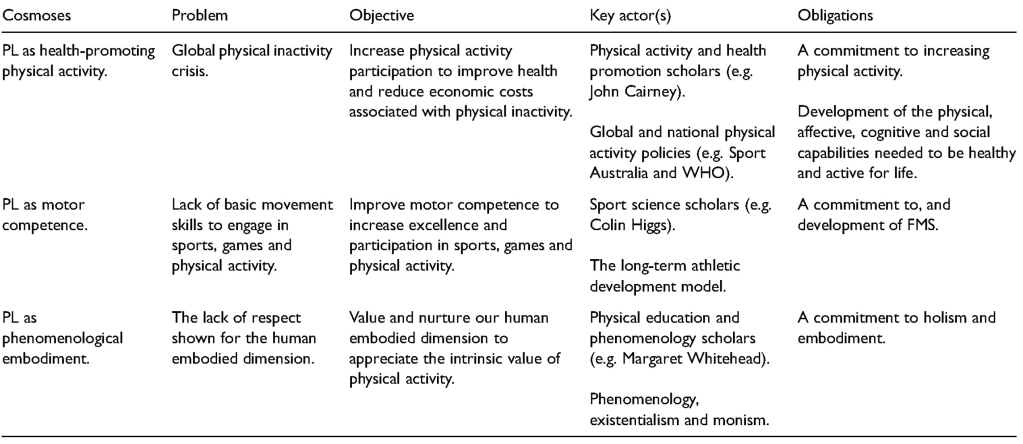
There is increasing political recognition of the importance of physical literacy (PL) in England. It was a critical principle underpinning UK Parliament’s (2021) recent proposal for a ‘national plan for sport, health and wellbeing‘ and the government’s response agreed that it should be an essential focus for physical education (PE) and school sport (DCMS, 2022). Whilst it is clear that PL as a concept is becoming more widely used both within policy and practice within this country and positioned as legitimate outcome for high quality PE, there is still much academic debate about what it is and how to develop it as highlighted by Sport England asking Liverpool John Moores University to lead on a consensus statement for PL in England.
Dr. Lisa Young from Monash University has made this a central focus of her PhD work. In her paper ‘Mapping the physical literacy controversy: an analysis of key actors within scholarly literature‘ she explores the key academic authors and conceptualisations of PL. Four broad clusters of PL ideologies were found in her study: 1) idealist embodiment which frames PL as a holistic disposition and underpins the IPLA view of PL, 2) idealist-pragmatic policy where PL is predominantly framed as an antecedent to physical activity, 3) pragmatic health determinant where PL is considered a determinant of health and disease and finally 4) pragmatic disease prevention where PL is considered the underpinning for living a healthy and active lifestyle and therefore suboptimal levels of PL, especially in children, can lead to sedentary behaviour and obesity.
Missing within the four clusters is a small but growing ecological conceptualisation of PL. Paul Jurbala in his excellent “What is Physical Literacy, Really?” takes the literacy metaphor of learning your ABC’s required for functional movement and expands on it by positioning movement and physical activity as a form of communication. A dynamic communication between the embodied self and the physical environment where reading is seen as perceiving the environment and writing is seen as moving in the environment. This idea has been further developed through an ecological dynamics informed view of PL. Ecological dynamics (ED) is a theory that attempts to explain how actions are coordinated, controlled, organised and learned within a person-environment relationship (and is composed of key ideas from ecological psychology, dynamical systems theory, complex systems theory and evolutionary sciences.)
An ED informed conceptualisation of PL can be viewed as the dynamic fit between the individual and the environment. This then views PL as ongoing process that contributes to a person’s wellbeing, not just the achievement of a checklist of knowledge, technical and motivational competences (O’Sullivan et al, 2020). In simple terms PL then is about how well an individual can cope within the demands of their environment over their lifetime. When PE Teachers’ overtly focus on declarative knowledge or decontextualised isolated movement patterns to develop PL, especially in pursuit of an ‘objective’ set of standards, they can inadvertently close off relational enrichment opportunities, therefore reducing the likelihood of developing a functional ‘individual-environment fit’ (Rudd et al, 2020).
This individual-environment fit definition of physical literacy can bypass much of the complex and confusing academic debate about the concept. However, the question of how to practically achieve this in PE remains. James Rudd and colleagues (2021) offer four guiding principles for PE Teachers who wish to prioritise an ecological dynamics informed physical literacy; they are Wayfinding, Value, Meaning and Functional Movement Solutions.
At the heart of this perspective is the development of Functional Movement Solutions. These are a range of behaviours dependant on specifying information, which integrate cognition, perception, and action, therefore allowing an individual to have success in a movement environment. Achieving this can’t be predominantly done through the accurate replication of technique in isolation, but through an active process of engaging in the world called Wayfinding (Woods et al, 2020). Wayfinding is mainly carried out through exploration, trial, and error. Exploration is foundational for learning and has positioned by a interdisciplinary group of experts as an overarching focus for children’s holistic development (Stodden et al, 2021). In helping a child navigate a movement environment, like an invasion game, a PE teacher may always prioritise an explicit explanation rather than encouraging children to investigate and gain ‘knowledge of the environment‘ themselves. This is well meant, but it can prevent children attending to relevant information and therefore the development of Functional Movement Solutions.
The Value of a task isn’t found within within the task itself, but emerges through the interplay of the capabilities of the child and the opportunities that the task affords them. Therefore, a well-designed task which invites exploration and provides a choice of challenge can better offer Value to all children. The discovery of Meaning during movement activities is personal and significant to the interacting constraints of a specific individual within a specific context. A PE Teacher can interfere with both Value and Meaning if they prevent exploration, choice and problem solving with highly repetitive and decontextualised rote practice.

This post is not to advocate for an ED informed PL above all others but to highlight that it is one of a range of potential options. Young and colleagues (2022) in another study suggest rather than seeking a grand unifying concept of PL we could instead embrace a range, where each one guides our thinking and practice in solving a particular challenge (see table above). From this perspective, an ED informed PL would help us attend to the challenge of ensuring that the individuals in front of us explore and find a functional fit with the activities they engage with and the environments they dwell in therefore allowing them to develop and flourish throughout their life time.
Previous posts on the concept of Physical Literacy:

One thought on “Physical Literacy: Ecological Dynamics”